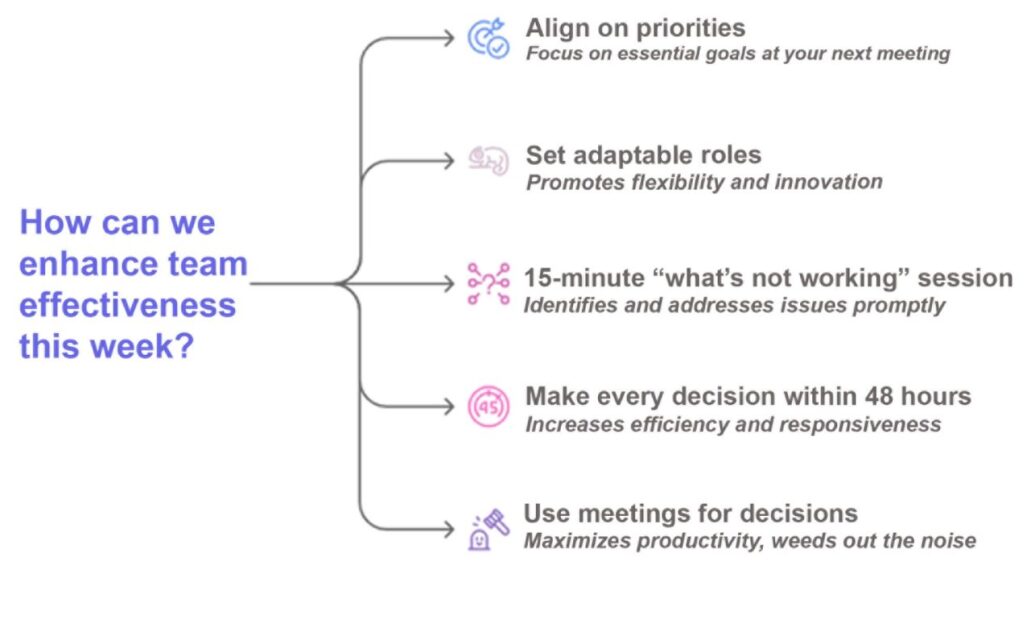
How to scale your AI use cases: A checklist
The business case for AI is realized when the application is scaled, not in the use cases of the pilot phase. Use the checklist below at the outset to ensure the transition...

by Susanne May Published July 3, 2025 in Brain Circuits • 3 min read
If this sounds familiar, it’s not because your people aren’t talented, but because the way they work together isn’t designed for success. Talent is not the secret sauce that separates good from great teams: what makes the difference is culture.
If the first instinct when something goes wrong is to find out who messed up, the team is already in trouble. This behavior kills trust and discourages risk-taking.
Slow, messy decision-making is a silent killer in teams. Circling the same issue in multiple meetings, waiting for consensus, or avoiding a call because no one wants to be the one who makes the wrong call leads to stagnation.
Beware of the “all-talk, no-action” trap. This is when meetings become updates instead of decision-making spaces – people leave a room without knowing what’s happening, who’s responsible, and when.
Start by asking the following questions:
Invites a pause and check-in on strategic alignment.
Gets underneath the delay without judgment and targets the “drag.”
Shifts sharply from blame to learning; behavior check.
Combines clarity and adaptive ownership.
Brings an outside-in lens, pressure tests for real-world effectiveness.
These are small questions, but the answers reveal a lot. Even something as simple as shifting a weekly meeting from updates to decisions can unlock huge gains in momentum.

The most successful teams balance structure with flexibility, psychological safety with accountability, and speed with thoroughness. And remember: talent sets the ceiling, but culture determines how close you get to it.

Founder and CEO of May & Company
Susanne May is a leadership and organizational development expert with over 20 years of experience driving high-performance cultures, strategic transformations, and digital learning innovation. She has partnered with global organizations such as the World Bank, UNICEF, WHO, and Daimler, delivering impactful learning programs with consistently high engagement. As a people leader, she scaled a global team across 60+ countries, championing growth through purpose-driven development.

November 27, 2025 • by Didier Bonnet, Achim Plueckebaum in Brain Circuits
The business case for AI is realized when the application is scaled, not in the use cases of the pilot phase. Use the checklist below at the outset to ensure the transition...

November 26, 2025 • by Albrecht Enders, Robin de Haas in Brain Circuits
Mastering your vocal presence is an essential dimension of leadership. Try these simple exercises to develop a more commanding presence that will resonate deeply with your audience. ...

November 25, 2025 • by Cindy Wolpert in Brain Circuits
Longevity was once seen by traditionalists as a proxy for good leadership, but successive generations attach less value to length of time served. As with anything, there are benefits and disadvantages. Here...

November 20, 2025 • by Richard Roi in Brain Circuits
Progressing internal talent helps hedge against new CEO failure, but it all hinges on integrating leadership development and succession planning. Ric Roi identifies the warning signs for organizations that fail to put...
Explore first person business intelligence from top minds curated for a global executive audience